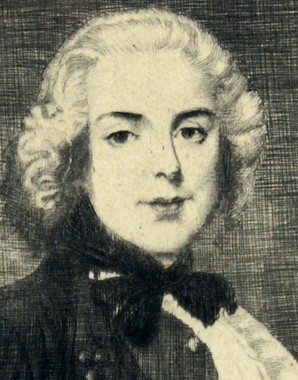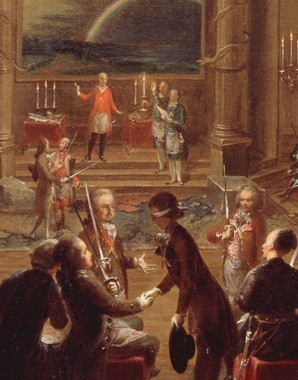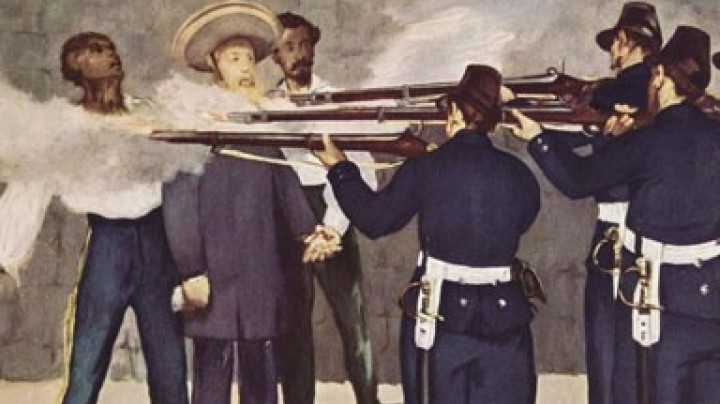Mozart’s last composition
For the dedication ceremony of a new lodge temple in Vienna Mozart composed the Freemason Cantata for male voice choir.
Together with the librettist Lorenzo da Ponte, Emanuel Schikaneder and numerous high-ranking members of the nobility and army, Mozart was a brother with equal rights in the Masonic lodge called Zur Wohltätigkeit (‘benificence’. They supported liberal ideals and made music together. Mozart was a keen member and had been promoted to the status of journeyman Mason in 1785. His brother Masons were a constant source of financial support to him.
The Freemason Cantata was Mozart’s last composition, and was first performed on 18 November 1791. According to Mozart’s wife Constanze, who collected his works, Mozart was proud of it: ‘If I didn’t know that I had written better things, I would regard this as my best work’. An early edition of the cantata also contained a Kettenlied (chain song) with the tune of the present-day Austrian national anthem, which led to the false assumption that it was also a work by Mozart. However, no original manuscript of this exists by Mozart, nor is there an entry in his hand in his register of his own works. In musical terms, it is also unlikely that he wrote it. Today Johann Holzer, a brother in the same lodge as Mozart, is regarded as the composer of the Austrian national anthem, introduced in 1946.
Mozart died on 5 December 1791 aged just thirty-six, of a hitziges Frieselfieber (high fever accompanied by a rash), according to his death certificate. He was buried in the suburban St Marx cemetery in a shaft grave together with five other coffins. In accordance with the burial order that Joseph II had issued to make funerals cheaper, Mozart was given a third-class funeral – without music, flowers or even a headstone.
By contrast, Prague felt Mozart’s death as a bitter loss: only a few days after his death the orchestra of the Bohemian National Theatre held a memorial ceremony in the church of St Nicholas. The city was filled with the tolling of bells for over half an hour, and more than 4,000 mourners crowded into the church.
Mozart’s assets were calculated precisely at his death: household effects, books and clothing amounted to around 500 gulden, against a mountain of accumulated debts totalling 3,000.
Constanze Mozart administered his estate after his death and profited from his growing fame: when his great works were published after 1800, she earned substantial sums from the copyright and was eventually able to pay off her husband’s debts.
















